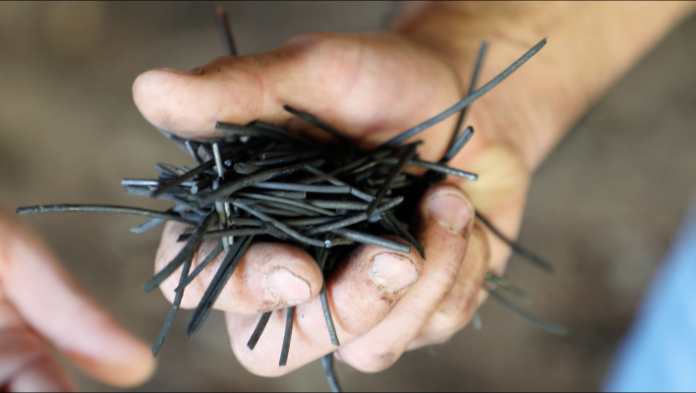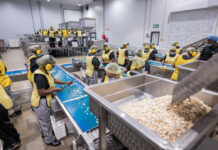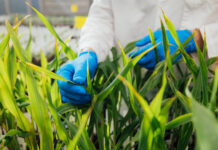“I’m always surprised by those who see Mars as our next frontier for exploration. What about the ground beneath our feet? We’re just beginning to learn how rich and diverse it is. It’s literally crammed with information on which our survival as a planet depends. Shouldn’t that be the quest we make our priority?” asks agricultural specialist for Distell, Henk van Graan.
His focus is on holistic, low-intervention farming in the pursuit of creating a more resilient terroir for Nederburg, where ultimately healthier vines will lead to even better wines and inputs such as chemical fertilizers, pesticides and herbicides can be curtailed, if not altogether eliminated.
“When I studied viticulture in the 1990s, soil wasn’t given that much emphasis. In those days, it was considered more of a planting medium to be treated with appropriate interventions for optimal vine growth. It’s only in recent years that awareness about intrinsic soil life and health has grown, and with it an awareness of the connection to climate resilience and food security.
“As we move towards more regenerative farming, where we start with the health of the soil, we are beginning to uncover the extent to which beneficial micro-organisms of the soil food web (bacteria, fungi, protozoa etc.) are linked to sustainability. Ironically, while this type of farming involves many ancient practices, in some ways it represents a whole new frontier for modern farmers. Especially as we deepen our knowledge of mycorrhizal networks, where microorganisms in the root systems of plants connect individual plants together and transfer water, carbon, nitrogen, and other nutrients and minerals.
“We’ve come to understand that around 70% of the earth’s microorganisms exist below the surface of the ground. That’s more diversity below than above ground. To consider this on a micro-scale, can you imagine that there can be more than 25 000 species of microorganisms in a single teaspoon of soil!
Microbes matter
“As we begin to appreciate the ecosystems of healthy soils, we are learning in more detail about how their microbial populations provide structural support for all types of plants. They help to fix nitrogen, aerate, moisturise and enrich the soil. Carbon compounds are released by plant roots into the soil to feed billions of organisms and cycle nutrients. As a result, aggregate habitat is created to play an important role in filtering, retaining, and draining water.”
Microbial communities also play an important role in carbon sequestration, using light energy converted into chemical energy (carbon compounds via root exudates) that is stored in the soil during photosynthesis.
Van Graan quotes soil scientist and conservation agronomist Ray Archuleta to explain: “The plant and soil are one”. In other words, without plants, we wouldn’t have microbes and without microbes, we couldn’t call it soil.
In South Africa, where the threat of drought is never far away, cover cropping in vineyards has long been an important way of promoting soil health and biodiversity, while reducing evaporation and regulating temperatures. The roots of cover crops feed and stimulate the populations of soil microorganisms that recycle plant material and enrich the soil with nutrients. In time, these nutrients will feed future cover crops and, of course, the vines themselves.
Under Van Graan, cover crops planted at Nederburg have included oats, lupins, fava beans and vetch. He is finding that healthier soils, leading to more abundant cover crops, bring more beneficial insects that act as natural insecticides and pesticides.
Biochar at Nederburg
While a long-time advocate of cover cropping, since 2017 Van Graan has been applying a new level of urgency to promoting soil health. He wants to accelerate carbon sequestration and advance soil life through microorganisms. One of the ways he is doing this is by generating biochar at Nederburg.
Although not new (it has been used in the Amazon for millennia) biochar is charcoal produced from plant matter (biomass). When used as a soil additive, it not only removes carbon dioxide from the atmosphere, but it creates an environment conducive to boosting microbial populations while building soil structure, reducing soil acidity, and generally decontaminating the soil. Because it is so porous, it absorbs, retains, and aggregates water and increases organic soil life, ultimately lowering the need for inputs such as additional water and chemical fertilisers.
Biochar is made in a process called pyrolysis in which the plant material, usually agricultural biomass (plant and/or animal waste), together with staves or wood chips from no longer used wine barrels, is charred in a low oxygen environment at very high temperatures that exceed 400 degrees Celsius.
An important feature of biochar is that it is recognised as carbon negative. It remains in a highly stable form in the soil, indefinitely, storing carbon potentially for hundreds if not thousands of years. Biochar can be added to the soil to sequester carbon and reduce net greenhouse gas emissions.
Van Graan mixes the biochar produced at Nederburg with compost derived from grape skins, stems, pips, as well as other organic waste on the farm, together with recycled water. The mix is then inoculated with nutrients and beneficial organisms.
He is now also culturing indigenous microorganisms (IMOs) collected from Nederburg soils. Once prepared, they are re-introduced into the soil either directly or via IMO sprays to aid plant health and promote good growth. There is a symbiotic relationship that occurs between plants and beneficial IMOs. The microorganisms convert nutrients into a form that the plant can absorb. In turn, the plants provide food (carbon compounds) to these microorganisms through root exudates. This type of closed-loop farming system maximizes the use of on-farm resources.
Van Graan and his team have been addressing soil health very specifically since 2017. Since then, they have seen a double-digit decline in the use of insecticides. They are currently engaged with water monitoring specialists to give very precise readings on water consumption. “All this data is important for us as a business. As critically, the more data we have, the more empowered we are to bring our supplier growers on board. Many of them are already adopting some the same strategies as we are. That makes it a win-win all round.”
Asked if Nederburg considers itself an early adopter of such eco-conscious measures, Van Graan shrugs. “Environmental stewardship has always been a priority for us. In 2011, we were acknowledged for our efforts as a Biodiversity Champion by the WWF for our work to rehabilitate parts of our farmland to indigenous habitat with the re-establishment of local flora, and more recently, in 2020, we achieved WWF Conservation Champion status for water conservation. But it goes back much earlier. Nederburg was also involved in the piloting of the country’s Integration Production of Wine programme in 1998. Now followed by virtually all South African producers, it encompasses a set of eco-sustainability principles to which growers must adhere.
“It’s a way of life for us. We’ve been at it a long time, finding new ways as we go.”
To view a video depicting Nederburg’s new regenerative farming practices, click here (trailer) and here for the full video.









